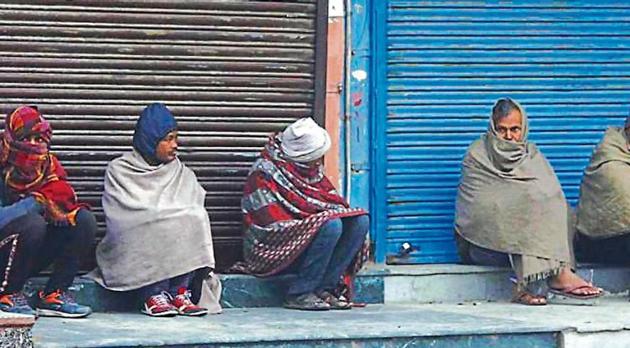Consistent low temperatures part of a trend in Delhi
Earlier, the IMD had declared December 2019 as the second-coldest December month in Delhi since 1901 based on average maximum temperatures (18.76 degree Celsius).
Consistent low temperatures being recorded in Delhi could in fact be part of a longer trend, shows an HT analysis based on IMD’s grid-wise (area bound by two latitudes and two longitudes) temperature data from 1951 onwards.

The maximum temperature on Wednesday (14.42 degree Celsius) was the third lowest for January 8 since 1951 for Delhi and neighbouring areas. And minimum temperature (11.82 degree Celsius) highest since 1951.
Earlier, the India Meteorological Department (IMD) had declared December 2019 as the second-coldest December month in Delhi since 1901 based on average maximum temperatures (18.76 degree Celsius). Also, December 30, 2019 was the coldest day in the national capital on record based on daily maximum temperatures (9.4 degree Celsius).
While December minimum temperatures in Delhi and neighbouring areas have been rising since the 1970s, maximum temperatures have started decreasing since the 2000s.
This is also true for all the winter months (December, January and February) taken together. This region recorded its third-lowest maximum temperature (14.42 degree Celsius) for January 8, since 1951 this Wednesday. January 8 had lower maximum temperatures compared to the data for the same date in 2003 (12.51 degree Celsius) and 2011 (13.16 degree Celsius).
Wednesday in this region also saw the highest minimum temperature (11.82 degree Celsius) for January 8, since 1951. The previous highest minimum temperature was recorded in 1954 (11.54 degree Celsius).
(See Chart 1: Average December temperatures in Delhi and neighbouring areas)

The analysis has also taken into account the weather from neighbouring areas because Delhi is not a perfect square or rectangle on a map and too small to be covered by a grid in IMD’s data.
These neighbouring areas include Faridabad, Sonepat, Gurgaon, and Jhajjar districts in Haryana; Ghaziabad, Gautam Buddha Nagar, Baghpat districts in Uttar Pradesh. It also includes most of Rohtak and Rewari districts in Haryana and most of Meerut and Bulandshahr districts in Uttar Pradesh.
This trend in Delhi and neighbouring areas is in contrast with the all-India trend in temperature, where both maximum and minimum temperatures in winter months have been increasing since the 2000s.
To be sure, HT has analysed the all-India data only till 2018. This is because the geographical extent of the 2019 data from IMD does not match that of earlier years. HT also included the subset of this data for Delhi and neighbouring areas in the analysis because the values obtained were close to that provided by private agencies.
(See Chart 2: Average minimum and maximum temperatures during winter for India)
This gradual rise in winter temperature, however, does not rule out the possibility of intermittent colder and warmer days during winters.
This is because deviation from average temperature has increased in both directions in the last two decades.
(See Chart 3: Departure of minimum and maximum temperatures from normal)
This implies that we might have to deal with two challenges in winters while adapting to climate change.
One, the warmer winter itself, which might affect crop patterns, winter rainfall, etc. Two, extreme drop or rise in temperature on particular days, which affects those with few resources the most.
Mrutyunjay Mohapatra, Director General of India Meteorological Department, said he would need to look at the data analysis before giving a detailed response.



